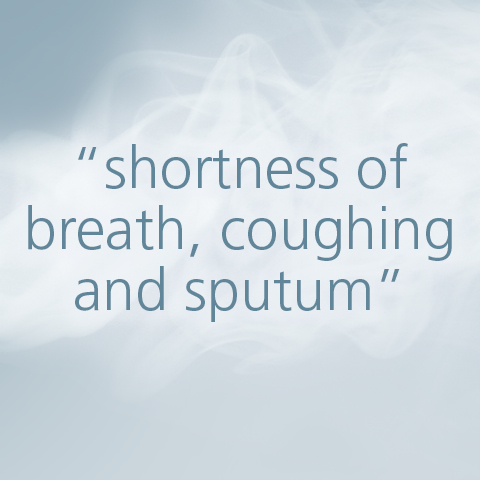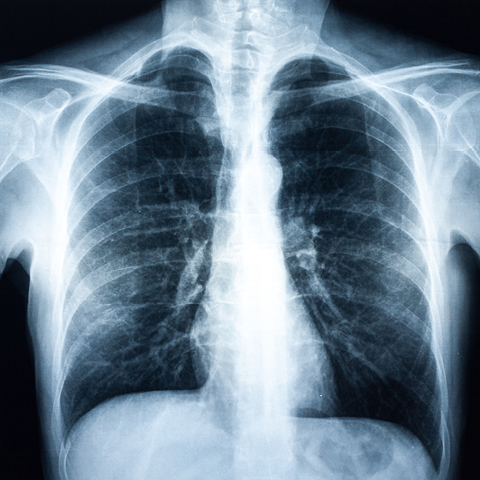Typical signs of COPD are shortness of breath, coughing and sputum. A slight tightness in the chest is also a symptom of COPD. Male smokers over the age of 60 are most affected by COPD. However, the proportion of women and younger patients (from about the age of 40) is rising significantly. Unfortunately, the problems that this disease causes are greatly underestimated. The typical COPD symptoms are far too often downplayed by those affected.

There are four different stages of COPD. The more advanced the COPD, the faster the patient gets out of breath. In a severe stage even simple day-to-day activities like getting dressed or undressed can leave the patient out of breath.
The main reason chronic obstructive lung disease (COPD) develops is smoking. The risk of the disease rises in line with how much the patient smokes. Non-smokers have a lower risk of developing COPD, but other harmful substances or a family predisposition can contribute to someone developing COPD.
COPD usually progresses according to the following pattern: Chronic bronchitis develops over the years to chronic obstructive bronchitis, e.g. because of the lasting effects of cigarette smoke. This results in a narrowing (obstruction) of the bronchial tubes, which leads to shortness of breath during physical exertion. In advanced stages the alveoli are damaged (emphysema). Breathing out is more difficult and those affected often feel tired and exhausted.

Sometimes there can be a sudden deterioration in the disease (exacerbation). Those affected cough more violently, have more sputum, are more breathless and often have fever. It is often triggered by viral or bacterial infections of the airways or increased contact with harmful substances, but also by other diseas-es affecting the heart and lungs (e.g. pneumonia).
We understand how difficult the symptoms are for you as a patient. This makes it all the more important to do everything to prevent your disease from progressing quickly and to ease the symptoms. There are some things you have control over, such as stopping smoking, a healthy diet and exercise.
A central component of COPD therapy is medications that expand the bronchial tubes. The use of inhalation therapy is advisable here – for instance, using a nebuliser or an MDI.
Contact us
PARI GmbH
Spezialisten für effektive Inhalation
Moosstrasse 3
D-82319 Starnberg
Germany
Tel.: +49 8151 279-220
Fax:+49 8151 279-101
Should you wish to verify the Serial Number of your PARI device, please enter it in the comment section of the contact form and submit it together with your name and email address. No further information is required.
© 2025 PARI GmbH Spezialisten für effektive Inhalation